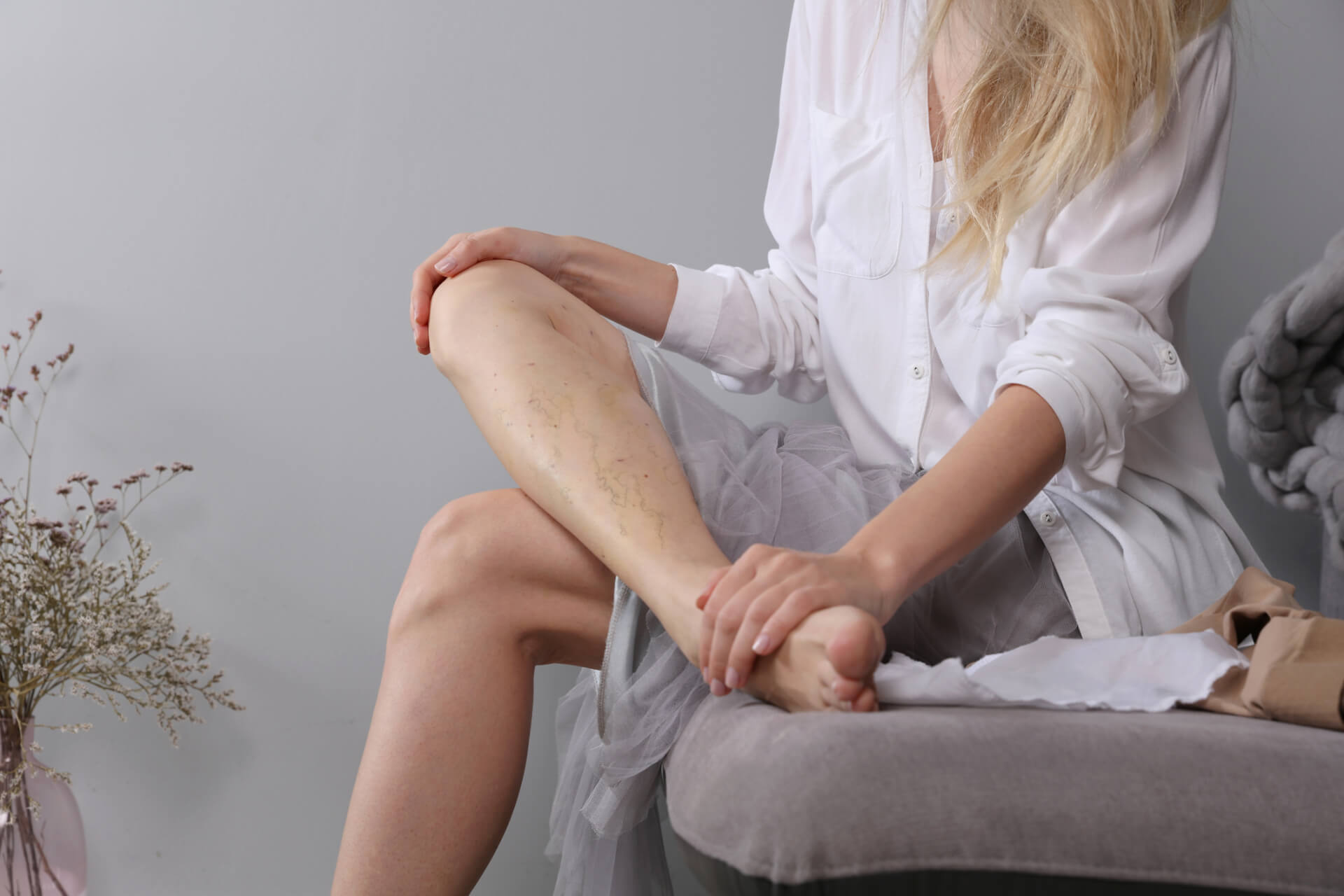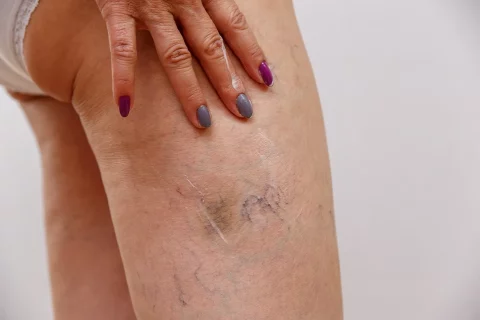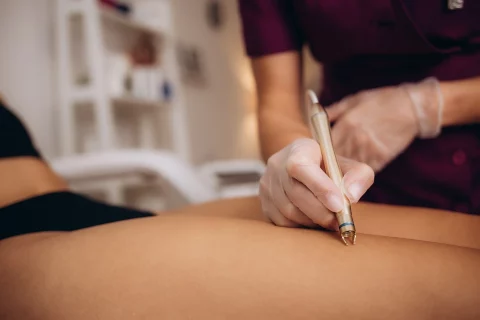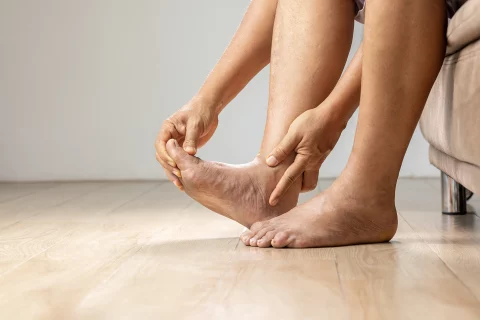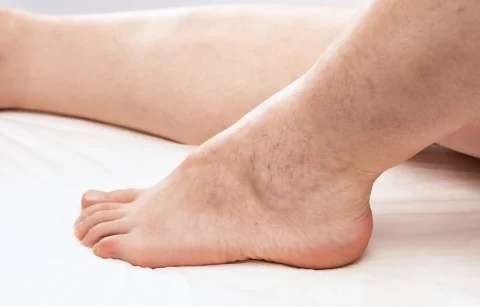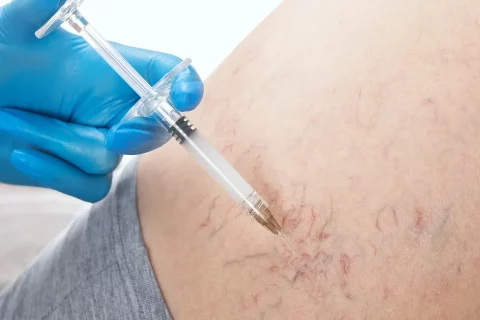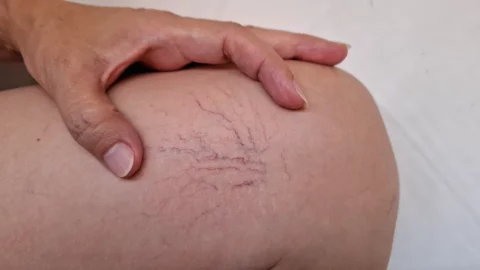Blood flows throughout the body with the help of blood vessels and the veins help circulate them back to the heart. But once the veins weaken, instead of pumping blood to the heart, it may accumulate in the vein and the pressure may cause the vein wall to rupture. This creates the tiny, web-like clusters of veins, or spider veins, that you commonly see on your legs and face.
So what treatments can be done to eliminate these small visible veins? Spider veins are typically harmless but they can sometimes come with pain and aches especially on the legs. Treatment for spider vein problem includes nonsurgical procedures like sclerotherapy, laser vein removal, radiofrequency ablation, endovenous ablation, and compression therapy.
Spider Vein Disorder: How To Eliminate Them From Face And Legs
The superficial veins that you see on your skin may differ in size, color, and shape. If you notice larger veins that seem like twisted knots and appear protruding, they are most likely a varicose vein. Varicose veins are usually red or blue-colored, and they are common on the legs, thighs, and back of calves. They can come with painful symptoms like swelling, heaviness, and cramping especially if you’ve been standing for too long.
On the other hand, a spider vein is a vein disease characterized as smaller veins with thin lines that seem to branch out and resemble a spider’s web. They are usually red and appear just beneath the skin’s surface. They are found on the face (also known as telangiectasia) and the legs.
Both varicose and spider veins are a result of broken blood vessels, most likely due to the enlargement of an affected vein. A venous disorder like chronic venous insufficiency (CVI) can affect blood flow and result in visible facial and leg veins. Age, genetics, pregnancy, rosacea, lifestyle factors, sun damage, and injuries may also contribute to the appearance of spider veins.
Spider veins are not only a cosmetic issue but they can also cause pain and discomfort to a patient. And very rarely, if it’s caused by an underlying vein condition like CVI, it may cause serious complications like skin infections, rashes, and blood clot. So as early as possible, you should treat them before they get worse. Here are the possible options for spider vein treatment:
1. Sclerotherapy
Sclerotherapy treatment is the most common procedure done for spider veins. It’s a safe and minimally-invasive vein treatment where a dermatologist injects a chemical solution to the damaged vein. If the leg veins are getting treated, a patient will be asked to lie down and prop up their legs.
Before the injection, they will sanitize the area that will be treated. They will pierce the skin with a fine needle and slowly push the solution to the diseased vein. This therapy works by causing the vein to irritate and eventually shutting down the flow of blood. This will direct the blood to circulate to the direction of healthy veins. The injected veins will become scar tissue and will diminish over time.
The results of sclerotherapy may take at least three to six weeks to take full effect. Some people may also need more than one injection treatment depending on the size of the treated vein. When the affected vein is completely dissolved from the treatment, there’s no chances of them coming back.
2. Laser treatment
Laser treatments are effective for treating the small spider veins. This procedure involves using a strong beam of laser light that is directed on the visible veins on your skin. The energy from the laser light effectively heats and causes scarring on the damaged vein and broken blood vessels.
To minimize the painful sensations from the laser beam, a cooling gel will be applied to the affected area before the procedure. Small veins may become less noticeable immediately after the treatment while the larger varicose and spider veins may darken at first before completely disappearing within 3 months. This treatment also helps improve the flow of blood to a healthier vein.
3. Endovenous ablation
Endovenous ablation is a form of laser therapy but instead of placing the laser device against the skin, this procedure uses a laser fiber inserted with a catheter beneath the skin. During this treatment, a surgeon may use an ultrasound to guide the catheter in the skin.
Once they find the affected vein, the fiber will emit a laser energy to the vein wall which triggers them to seal shut. This will block the flow of blood in the affected area and reroute them to healthier veins. Similar to laser treatment, the damaged vein will eventually disappear which will improve the appearance of spider veins on your skin.
4. Radiofrequency ablation
Radiofrequency ablation therapy is a treatment commonly performed for larger spider and varicose veins. It is essentially similar to an endovenous treatment where an incision is needed to treat the affected vein. However, instead of laser energy, this procedure uses radiofrequency energy to heat and close off the veins.
Some patients may prefer radiofrequency treatment since the heat from a laser light can be more painful. Recovery from radiofrequency also comes with less post-op complications and there are lesser chances for bruising.
5. Compression therapy
This is a surgery-free and incision-less treatment where controlled pressure is introduced to improve blood flow in the lower body. This typically involves wearing compression stockings or socks to support the veins in your legs and promote better blood flow.
Compression stockings can greatly manage the varicose and spider veins on your legs as it effectively prevents blood from accumulating in the veins. They also reduce swelling and inflammation for people whose jobs require them to stand for a long time. Compression devices may be safely worn throughout the whole day.
Read more: Spider Veins Treatment Costs: How To Make Spider Vein Treatment Worth It
What To Expect After Spider Vein Removal Procedure
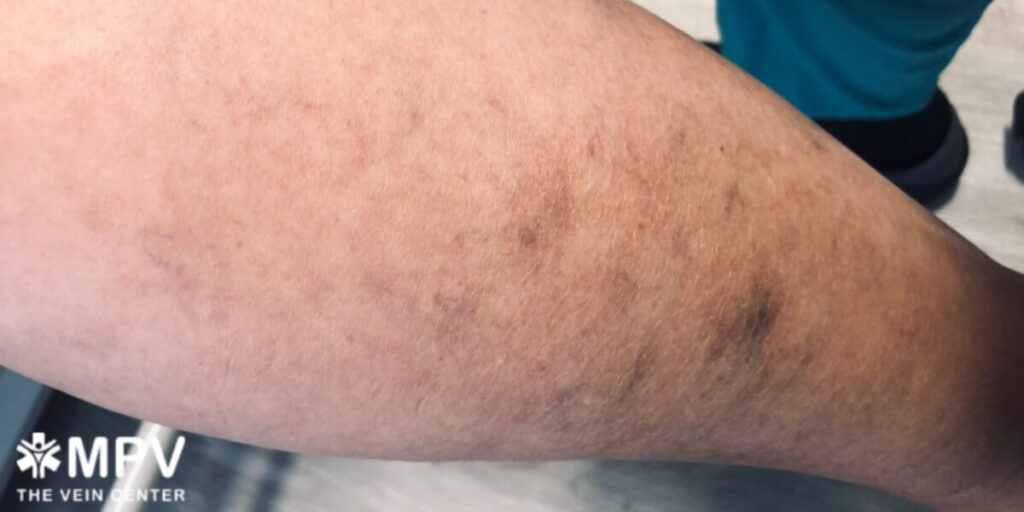
Vein removal treatments may come with minimal risks and side effects. These side effects may include stinging pain, swelling, bruising, redness, and minor skin discoloration. Meanwhile, there’s almost no side effects for compression therapy but if the device is not worn properly, there may be some bruising, inflammation, and itching on the skin.
There are some aftercare reminders that you also need to take note of after undergoing a vein treatment. First, you may be advised to wear compression stockings to keep the treated vein closed. It’s also important to move your legs to avoid blood clot formation in the veins.
You may also feel a slight tightening sensation on the treated area for a few days after the treatment. To help with this discomfort, your surgeon may prescribe you with pain killers that you need to take to help relieve the pain.
As much as possible, avoid any strenuous activities or exercises that may damage the treated veins. You should also avoid getting exposed to the sun and don’t visit any saunas or hot spas for several days after the treatment.
Tips To Prevent Spider Veins
For some people, spider veins may be an inevitable condition especially if it’s caused by genetic factors, pregnancy, or underlying conditions. However, there are things that can be done to manage and prevent them worsening such as:
- Wear sunscreen protection, especially for the face, to avoid damage from free radicals in the sun.
- Stay active and exercise regularly to keep a healthy blood circulation and strengthen the veins in your legs.
- If your work requires you to stand for the whole day, try to take a break and sit down for every 30 minutes to alleviate some of the pressure on your legs.
- Avoid showering in hot water or taking hot baths since hot temperatures can cause a blood vessel to dilate and result in spider veins.
- You may also apply horse chestnut extract to relieve inflammation and lessen spider veins. It contains aescin which has medicinal properties that are significantly beneficial for symptoms of venous insufficiency.
- You can also undergo a weight loss program to shed some extra pounds that are putting pressure on your veins.
Visit A Vein Specialist At Vein Center Doctor
Spider veins can be easily and safely treated with medical procedures such as sclerotherapy and laser and radiofrequency treatments, and they can be managed with compression treatments. But to ensure that you get the right treatment for your vein problem, it’s important to visit a trusted vein clinic like The Vein Center.
At The Vein Center Doctor, we provide safe and quality vein treatments for your overall beauty and wellness. Our doctors and staff can help figure out the source of your varicose veins, spider veins, and leg pain, and come up with a customized plan for you. Call us now to schedule an appointment.

